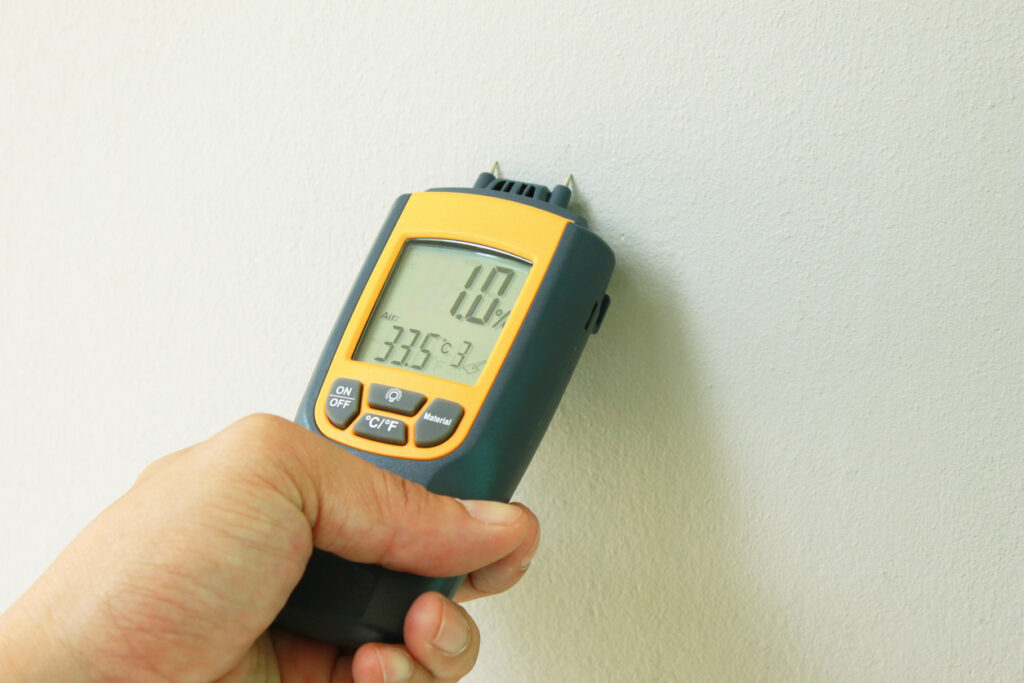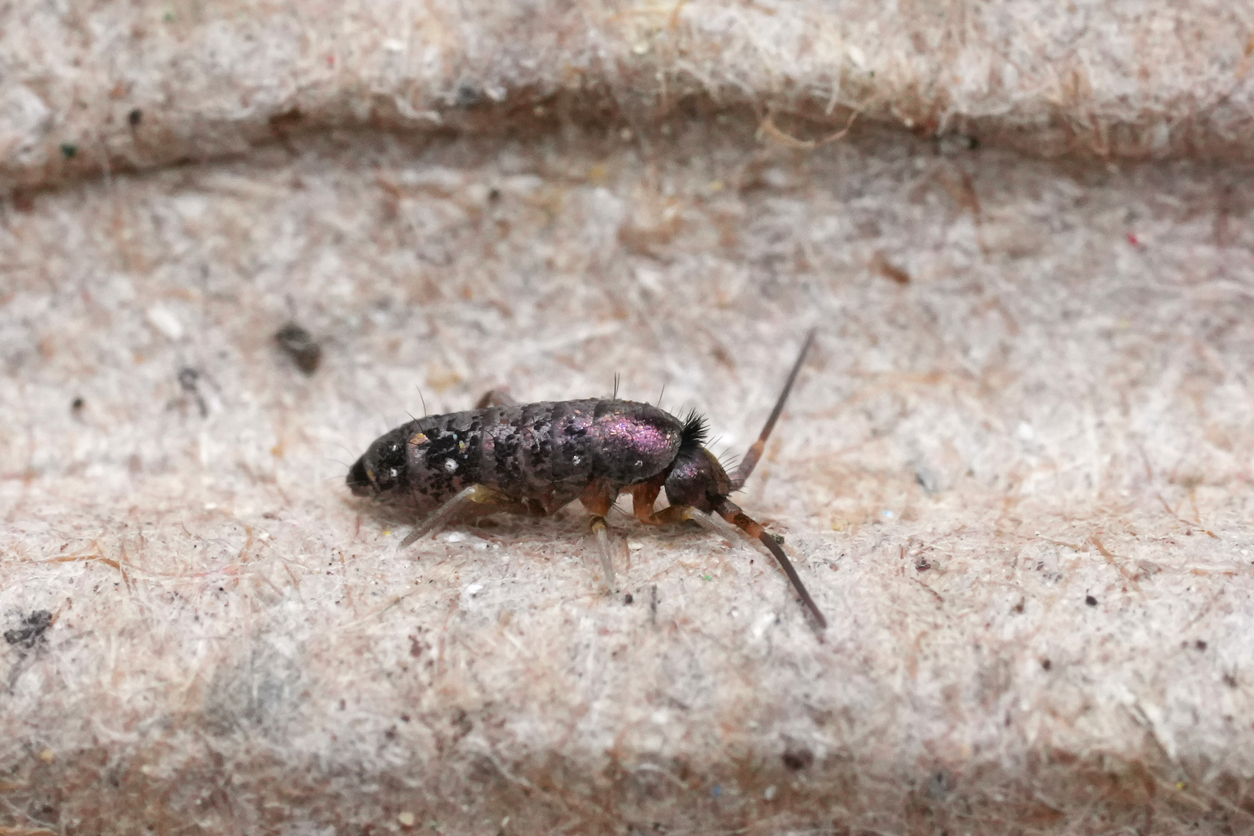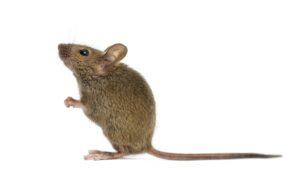If you’ve noticed tiny, jumping bugs near your foundation, windowsills, or basement walls, you’re not alone. Many homeowners in Algonquin and the broader Northern Illinois region are discovering that their homes have been invaded by springtails—and summer 2025 is shaping up to be a record year for these moisture-loving insects.
But what are springtails, and why are they showing up in record numbers? Here are some fascinating (and slightly annoying) facts about these elusive pests.
1. Springtails Aren’t Technically Insects
Springtails belong to a class called Collembola. While they resemble insects, and in fact used to be classified as such, they are more closely related to crustaceans than ants or beetles. They’re often grouped with hexapods because they have six legs, but they lack wings and have internal mouthparts which separates them from true insects
🦘 2. Their Jump Is Powered by a Built-In Catapult
Springtails are named for their unique ability to jump great distances—for their size, that is. They have a forked appendage called a furcula, which is folded under their abdomen like a spring. When released, the furcula launches them into the air in a split second. That’s why you often see them disappear the moment you try to squash one!
💧 3. Springtails Thrive in Moisture—Inside and Out
In Northern Illinois, springtails are commonly found in damp environments like mulch beds, under leaves, and beneath landscape timbers. But when outdoor moisture conditions become extreme—like after heavy rain or during a drought—they often migrate indoors, seeking humidity and shelter. That’s why you’ll spot them in basements, bathrooms, laundry rooms, and around windows.
🧱 4. New Construction Homes in Algonquin May Be a Target

Many homes in Algonquin and surrounding suburbs like Lake in the Hills, Huntley, and Cary are relatively new builds. Unfortunately, newer homes often have high residual construction moisture trapped in walls and subfloors within insulation that may take a very long time to dry. That, combined with poor drainage or improperly sealed exterior gaps, creates the perfect storm for springtail activity. Interior pipe leaks may allow for excessive moisture. Remedies include fixing leaks and replacing affected insulation as it takes a very very long time to properly dry. Consult a professional home inspector to check your walls for excessive moisture using tools like a moisture meter (pictured)
Check the exterior of your home for proper lawn drainage. Often times new construction homes are built with improper grading and/or poorly placed exterior downspouts. These issues aren’t readily obvious until thousands upon thousands of springtails begin swarming the home. Regrading and extending downspouts will allow the yard to drain and activity will eventually go down.
🌡️ 5. This Summer’s Conditions Are Supercharging Springtail Populations
2025 has brought a wet spring followed by a humid summer across much of Northern Illinois, including Kane and McHenry counties. Springtails thrive in damp conditions. Extended wet weather has caused soil saturation, and in many cases, landscaping near foundations has stayed soggy for weeks—a major attractant. If the warmth continues and downpours return, expect another wave of indoor migration.
🏡 6. They Enter Homes Through the Tiniest Cracks
Springtails are minuscule—typically 1 to 2 millimeters long—so they can easily slip through foundation gaps, basement window wells, soffit vents, and weep holes. Once inside, they tend to congregate in clusters, especially where there’s mold, algae, or decaying organic matter.
🪳 7. They’re a Nuisance—But Not Dangerous
The good news? Springtails don’t bite, sting, or cause structural damage. They won’t harm pets or humans. Their biggest offense is psychological—they appear in large numbers and jump unpredictably, making them hard to control and unsettling to find indoors.
🧽 8. Reducing Moisture Is the Key to Springtail Control
Successful long-term control depends on addressing moisture issues both inside and outside the home:
Improve drainage near the foundation.
Fix leaking spigots, AC condensate lines, or downspouts.
Use dehumidifiers in basements or crawl spaces.
Replace mulch with gravel near the house.
Seal exterior gaps and cracks with silicone-based caulk.
🧪 9. Pesticides Alone Won’t Solve the Problem
While insecticides are a powerful tool, they are at their most effective when combined with moisture control. Even with proper moisture control, the yard or home walls take a long time to dry. Treating springtails externally requires careful pesticide application over the entire affected area, and is not something recommended to do on your own.
🕵️ 10. Springtails Can Indicate Bigger Problems
A persistent springtail infestation may be a red flag for hidden moisture, plumbing leaks, or insufficient home ventilation. In severe cases, it’s wise to consult with a pest control professional or even a building inspector who can use moisture meters and thermal imaging to diagnose the source.
🌿 Need Help with Springtails in Algonquin or Northern Illinois?
At Fox Valley Environmental Pest Control, we specialize in identifying and resolving springtail infestations throughout Algonquin, Elgin, Schaumburg, and the surrounding areas. If you’ve noticed springtails jumping around your baseboards, give us a call. We’ll help you stop them at the source—moisture—and keep your home pest-free, just contact us to schedule a free quote!


